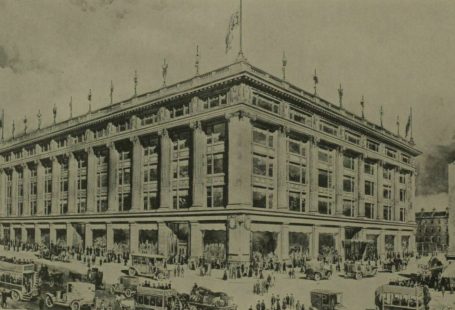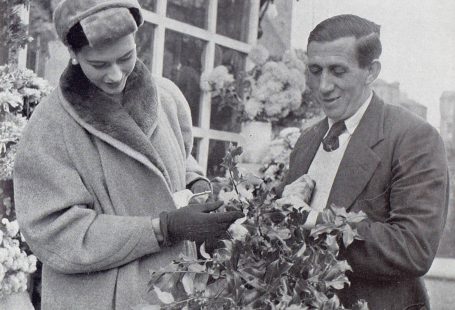We love hearing stories about what you’ve been finding while rummaging around in the Archive.
Pollie Scott, a family history researcher from East Yorkshire, has been finding dozens of fascinating stories in the Archive about her ancestors. And not only stories, for on her most recent visit to the Archive, she found a photograph (pipe in hand and standing in front of a very rickety-looking biplane!) of an ancestor who served in the Royal Flying Corps during World War One. Poignantly, this is the first photo that Pollie has ever seen of this ancestor.
Pollie has written a short article about this ancestor and what she learned about him via newspaper stories in the Archive, and has very kindly allowed us to post her article below.
***************************************************
For some time I have been researching a relative of mine called John Lloyd Williams. He was born in Goole, an inland port in Yorkshire. He was the son of Thomas Lloyd Williams, a merchant, and his wife Hannah of Old Bank House, Goole. John Lloyd’s family moved before he was five years old to Eloughton, near Hull, in East Yorkshire. His father was described as a ‘Coal exporter/sugar agent and shipbroker forwarding agent’ on the 1891 census.
In 1901 John Lloyd didn’t appear on the Census in Yorkshire. He was possibly in Ireland, where he was apprenticed at the Harland and Wolff Shipyard in Belfast (where the Titanic was built). he worked there as an engineer at the beginning of the century, and it was there that his his life-long friendship with Harry Ferguson (of Ferguson tractors) began.
When he joined the army his profession was engineer. He served in the Royal Flying Corps (Royal Air Force) in both World Wars, being shot down and seriously wounded in France in 1915.
I didn’t know a great deal about John Lloyd’s flying career before I found two articles in the Hull newspapers on the British Newspaper Archive website. I had already obtained a copy of his flying certificate and knew he had taken his certificate on a Hall Biplane on 26th January 1915.
After doing several searches on the archive website I discovered 2 articles In the Hull Daily Mail, and most exciting of all, a photograph of John Lloyd Williams in his uniform! (I’d never seen him before).
Hull Daily Mail – Wednesday 10 February 1915
Image © Northcliffe Media Limited. Image created courtesy of THE BRITISH LIBRARY BOARD.
http://www.britishnewspaperarchive.co.uk/viewer/bl/0000324/19150210/040/0003
He was described as a ‘Hull man’ who joined the Royal Fling Corps after obtaining his brevet at Hall Flying School Hendon, after only 163 minutes of actual tuition (2 hours and 43 minutes) covering a period of 13 days. In his altitude test the barograph read 1,650 feet!
The newspaper states that in an issue of “Flight” (which I presume to be a magasine?) his achievement was written about in glowing terms by ‘Aeolus”. Before joining the Royal Flying Corps John Lloyd Williams had been a member of the Public Schools and University Corps of the Royal Fusiliers. Because he was at camp with his battalion at Epsom, he was only able to attend Hall Flying School once or twice a week, when he could get permission.
Hull Daily Mail – Tuesday 09 February 1915
Image © Northcliffe Media Limited. Image created courtesy of THE BRITISH LIBRARY BOARD.
http://www.britishnewspaperarchive.co.uk/viewer/bl/0000324/19150209/097/0006
After gaining his flying brevet, he served in France, joining the theatre of war on 23rd July 1915. He became Captain Williams, and was eventually shot down in battle, which he fortunately survived, but he was hospitalised near Versailles, where he was on the dangerously ill list for several weeks. He won 2 medals, the WW1 Victory medal and a 15 star medal.
After the war he became a director of Harry Ferguson Ltd. and collaborated closely with Harry Ferguson on the development of tractors and a new mounting and hydraulic control system for their implements, which became almost universal.
He served again in the Royal Airforce in WW2, but unfortunately met with an untimely death in a road accident near Morecambe in 1940.
Pollie Scott
You can find out more about Pollie’s family history research via her Twitter account and on her two websites:
http://www.medievaltrees.com
http://www.mermaidsarise.com






2 comments On Your Family History Stories – Finding Photographs of Ancestors in the Archive
I’m sure someone has already been in touch to say that Flight is indeed an aviation magazine. The archives of which are available free online: http://www.flightglobal.com/pdfarchive/index.html
Here is a direct link to the piece about your ancestor that the Hull Daily Mail replicated in full:
http://www.flightglobal.com/flightpdfarchive/1915/1915%20-%200098.pdf
Thanks for posting that, Paul – much appreciated.